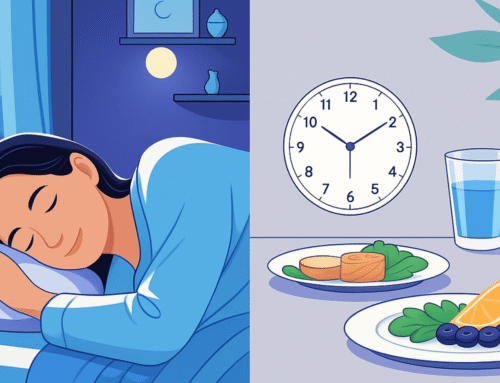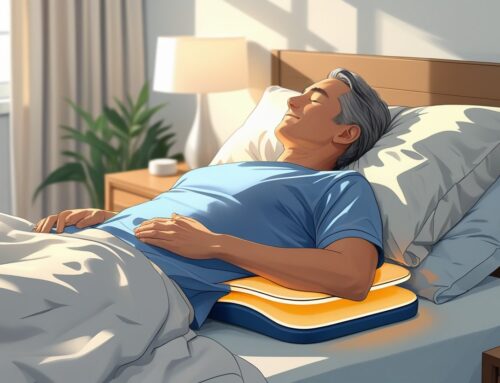Many people struggle with getting quality sleep, but finding the right sound can greatly improve rest. Pink noise is often the best noise for sleep, as it promotes deeper sleep and helps mask disruptive sounds.
Different types of noise, like white, brown, and nature sounds, each have unique qualities that can either calm the mind or provide gentle stimulation. Understanding how these sounds influence sleep can help individuals find what works best for them. Exploring these options may lead to better relaxation and improved sleep quality.
Key Takeaways
- Pink noise can promote deeper sleep by providing a calming background.
- Different types of noise affect relaxation and sleep quality in various ways.
- Using specific sounds into your routine may improve sleep habits and help reduce anxiety.
- Combining the best noise for sleep with a comfortable mattress can create an ideal sleep environment.

Understanding Color Noise and Its Impact on Sleep
Color noise refers to various sound frequencies that can influence sleep quality. Each type creates a unique auditory environment, which makes it important to understand their effects on rest.
The Science Behind Noise Colors
Noise colors are categorized into types like white, pink, brown, and green. White noise contains all frequencies at equal intensity, often resembling static. While it’s great for masking background noise, some may find it too harsh. Pink noise emphasizes lower frequencies, which produces a softer sound similar to gentle rain or waves. Studies suggest it improves sleep quality by promoting deeper sleep stages.
Although green noise focuses on comforting, natural sounds, pink noise tends to be more versatile for relaxation and sleep.
How Different Noises Affect Sleep Quality
The impact of noise colors on sleep varies from person to person. White noise is useful for blocking distractions, which can be helpful in noisy environments, but some may find it overstimulating. Pink noise is often recommended for improving sleep and relaxation. Research shows it can reduce the time it takes to fall asleep and enhance deep sleep cycles. Meanwhile, green noise, with sounds like rustling leaves or ocean waves, provides a calming atmosphere that can ease anxiety and promote better sleep onset.
Choosing the best noise for sleep depends on personal preference. Exploring options such as pink, brown, or green noise may help individuals find what suits their sleep patterns best.
Exploring the Spectrum of Sleep Noises
Many people use different types of noise to improve their sleep experience. Understanding the various colors of noise helps individuals choose the best sound for their needs. This section highlights the benefits of green noise, brown noise, and other sound options for restful sleep.
The Variety of Noise Colors
Noise appears in several colors, each with unique qualities. The most common types include white, pink, brown, and green noise.
- White Noise: This sound contains equal power across all frequencies, so it masks distracting noises effectively.
- Pink Noise: It resembles white noise but carries less energy at higher frequencies, which creates a more balanced sound that improves sleep quality.
- Brown Noise: With richer lower frequencies, it produces a deep rumbling sound that many find calming.
- Green Noise: This softer sound closely mirrors nature sounds such as waterfalls or gentle breezes, which promotes relaxation.
Green Noise and Sleep
Green noise provides a calming effect that supports better sleep. It mimics natural patterns such as birdsong or rustling leaves, which helps create a peaceful sleep environment.
Research shows that green noise reduces stress and anxiety, and it often leads to deeper rest. Individuals who enjoy nature sounds may find it especially helpful for blocking out harsher distractions. For instance, someone living in a busy city might use green noise to cover street sounds, while its soothing qualities promote a sense of calm and encourage better sleep.
Brown Noise Benefits
Brown noise has a deeper and bass-heavy sound that contains more power in the lower frequencies compared to white and pink noise. This is great for individuals struggling with insomnia. Studies suggest that brown noise improves sleep stability, and it may also help those with tinnitus by masking ringing sounds in the ears. Many people mention falling asleep faster and experiencing deeper rest when using brown noise. Its steady and comforting tone creates an inviting environment for relaxation.
Exploring different types of sleep noises helps individuals find the right sound for better rest. Each color has unique benefits, which allows people to choose what best suits their needs.

Comparing Green, Brown, and White Noises
Different types of noise affect sleep quality in unique ways. Understanding the differences among green, brown, and white noise helps individuals select the best option for their needs.
Green Noise vs White Noise
Green noise focuses on a balanced sound and is often described as gentle and calming. It emphasizes mid-range frequencies, which can feel more soothing to many listeners. Some experts suggest green noise may improve sleep quality better than white noise since it reduces harsh high frequencies.
White noise, in contrast, includes all sound frequencies at equal intensity. It effectively masks background noise, but its sharper tones may disturb light sleepers. People who prefer a softer and more soothing sound often choose green noise for a more pleasant sleeping environment.
Brown Noise vs Green Noise
Brown noise features a deeper sound with stronger low-frequency emphasis. Many compare it to the sound of a distant waterfall or thunder, and some find it helps them stay asleep longer. For this reason, brown noise may suit those prone to nighttime awakenings.
Green noise has a gentler touch, so it may help users fall asleep quickly, although brown noise often proves better for maintaining deep sleep. Those seeking a mild sleep aid may prefer green noise, while individuals needing stronger support may opt for brown noise.
White Noise vs Grey Noise
Grey noise resembles white noise but adjusts loudness across frequencies to match human hearing sensitivity. This design makes grey noise sound quieter at the same volume as white noise.
White noise can feel more intense because of its equal frequency distribution, whereas grey noise has a smoother experience. For those seeking a less intrusive background sound, grey noise may provide a better solution, yet white noise remains popular for its broad coverage and ability to block distractions.

Selecting the Best Noise for Sleep
Finding the right type of noise improves sleep quality. Different noise colors cater to various preferences and sleep environments. This section outlines the best noise options for sleep and identifies common sound preferences.
Which Noise Is Best for Sleep?
- White Noise: Known for its consistent sound that masks other noises, white noise effectively blocks sudden sounds.
- Pink Noise: Smoother than white noise, pink noise may promote deeper sleep since research suggests it helps reduce wakefulness.
- Brown Noise: With a deeper tone, brown noise often provides a calming effect, so many find it relaxing and easier to fall asleep.
Preferences vary, and some people prefer nature sounds such as ocean waves, which also create a calming sleep environment.
Best Noise for Sleeping
Choosing the best noise for sleep depends on personal taste:
- Pink Noise: Studies suggest pink noise, like soft rain, has a balanced sound that enhances sleep quality.
- Brown Noise: Deep rumbles in brown noise may suit those who prefer lower frequencies.
- White Noise: This is great for drowning out distractions entirely.
Possible sounds include meditative tracks or recordings of nature. People can try different sounds to see which resonates well with them. Testing different sounds may help determine what works best.
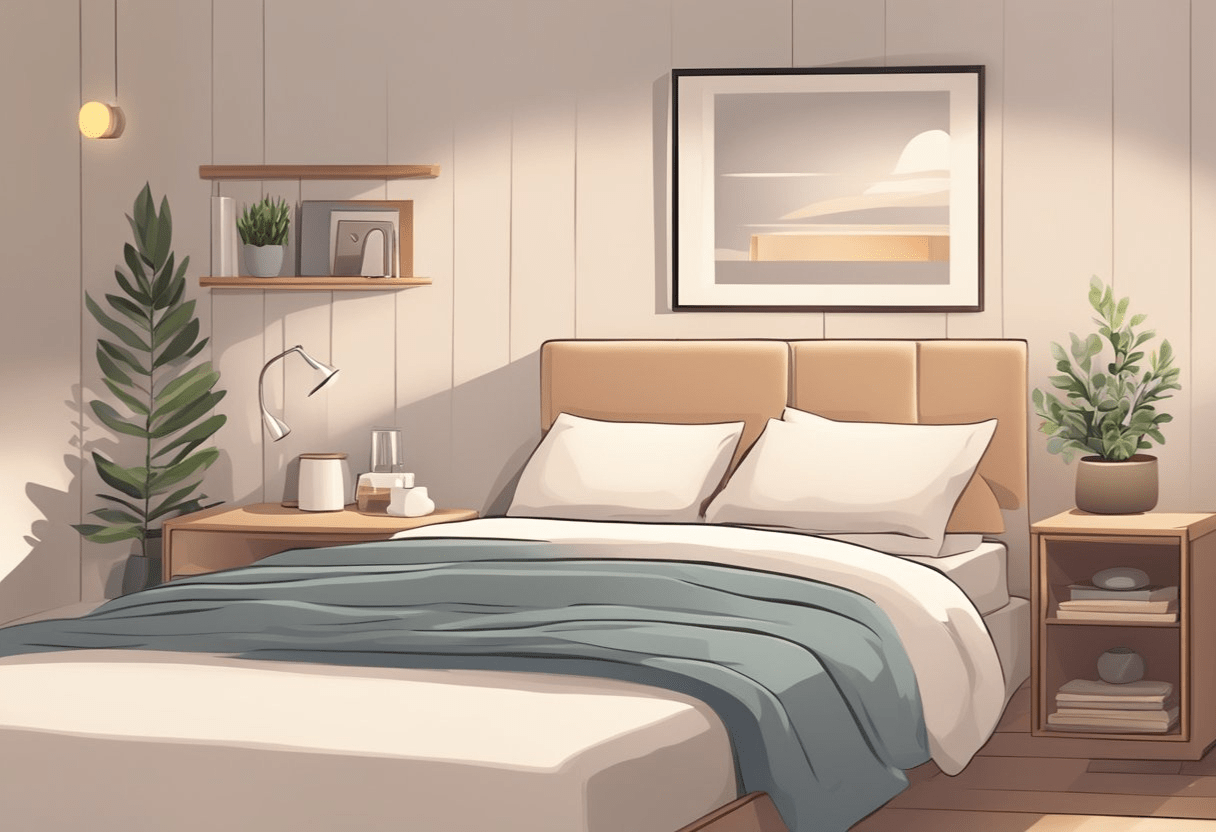
Analyzing Noise Colors for Anxiety and Stress Relief
Noise colors can reduce anxiety and promote relaxation. Each type of noise carries distinct characteristics that influence stress responses, so selecting the right one is essential.
What Color Noise Is Best for Anxiety?
Pink noise is often recommended for easing anxiety. It balances high and low frequencies, which creates a calming background that soothes the mind. Research suggests pink noise improves sleep quality, and since sleep closely relates to anxiety levels, this makes it an ideal choice for those seeking a peaceful environment.
Brown noise, known for its deeper tones, also proves beneficial. Its rich sound feels grounding to many, while the lower frequencies tend to resonate well with individuals who prefer a more intense noise experience. Some people report that brown noise masks intrusive thoughts and provides a sense of safety and calm.
Color Sounds for Sleep and Relaxation
Different noise colors can improve sleep quality and encourage relaxation. White noise effectively blocks background sounds and creates a consistent auditory environment that helps the mind unwind before sleep. It is perfect in noisy surroundings.
Pink noise can provide a more soothing sound experience. Its balanced frequencies are believed to promote deeper sleep cycles compared to white noise. Many find it more pleasant, which makes it easier to relax and fall asleep.
Brown noise also supports relaxation and sleep. Its deeper and richer sound provides comfort and acts as a gentle lullaby for those dealing with anxiety or stress. Each type has unique benefits, and their effects may vary from person to person.
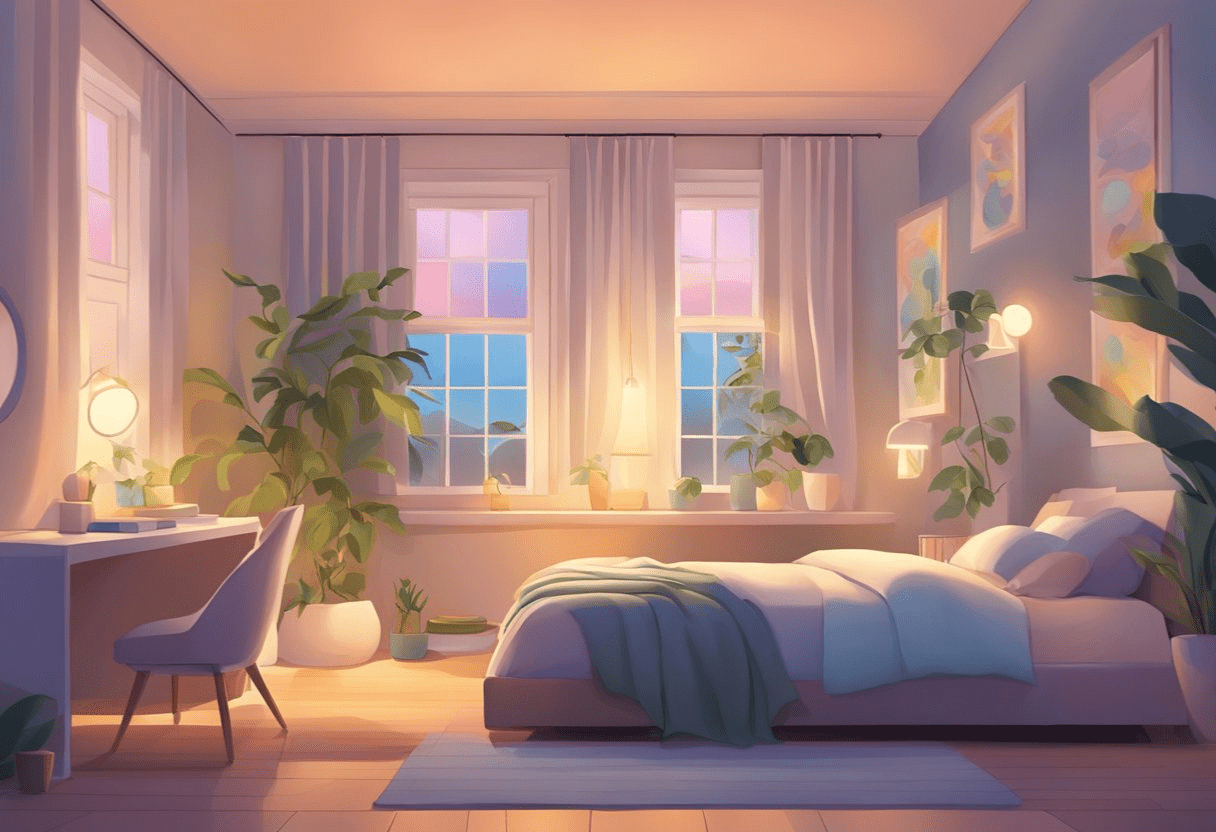
Advantages of Specific Noise Colors
Different noise colors have unique benefits that improve sleep quality. Understanding these advantages helps individuals choose the best option for their sleep environment.
Green Noise Advantages
Green noise combines elements of white and pink noise, which creates a soothing background sound. It often resembles natural sounds like wind rustling through leaves or a gentle stream. This noise calms the mind and reduces anxiety, so individuals may relax and fall asleep more easily. Studies suggest green noise masks disruptive sounds better than white noise, which is ideal for light sleepers or those in noisy surroundings.
Green noise supports focus during the day and promotes restful sleep at night, so it enhances both productivity and relaxation.
Grey Noise Benefits
Grey noise emphasizes lower frequencies while reducing higher ones, which creates a balanced sound that many find more comfortable than traditional white noise. Research indicates grey noise helps individuals fall asleep faster and improves sleep quality by stabilizing the auditory environment. Unlike white noise, which some describe as soothing, grey noise has a gentler soundscape that suits those sensitive to higher frequencies.
Grey noise also blocks out irregular sounds that interrupt sleep, so it serves as a practical choice for achieving uninterrupted rest. Its balanced nature meets various listening preferences.
Optimizing Sleep with Brown Noise
Brown noise produces deeper tones that resemble thunder or a distant waterfall. This noise effectively masks background sounds, so it suits heavy sleepers who need to stay asleep longer without interruptions. Brown noise also eases anxiety and promotes relaxation before bed, which proves helpful for those who struggle with racing thoughts at night.
Compared to green or pink noise, brown noise feels less intrusive for many individuals, so it creates a peaceful and calming atmosphere for sleep.
Practical Tips for Using Noise for Sleep
Using the right noise improves sleep quality. Creating a comfortable sleep environment and selecting effective noise sources are important. Here are some practical tips for achieving better sleep through sound.
Creating an Ideal Sleep Environment
The sleep environment is important for uninterrupted sleep. He should block out disruptive noises with soundproofing measures such as heavy curtains or rugs since these help maintain a quiet baseline for any chosen noise.
Next, the chosen noise type is essential. Many find that white noise is effective because it masks sudden sounds. Other options include pink noise and brown noise, which are both softer and can be less jarring. A fan can also produce a continuous sound that some prefer. It’s important to keep the volume at a soothing level. Sounds should be loud enough to cover unwanted noise but not so loud as to be irritating.
Noise Machines and Apps
Noise machines and apps provide convenient ways to generate sleep sounds. Many machines are specifically designed to create various types of noise, like white, pink, and brown noise. Users can adjust these sounds according to preference and room size.
For those who prefer apps, several options allow users to mix sounds to achieve the best balance. Rain, beach waves, or ambient nature sounds may provide relaxing alternatives.
Maintaining a comfortable volume throughout the night is important, and battery-operated devices may prove helpful for travel since they support consistent sleep routines anywhere. Trying different noise options can help identify what works best.
How Your Mattress and Sleep Sounds Affect Sleep Quality
The quality of sleep depends heavily on both the mattress and the sounds in the sleeping environment. A good mattress provides proper support, which reduces body aches and promotes restful sleep.
Mattress Considerations
- Firmness Level: Some prefer firmer mattresses for support, while others find softer options more comfortable.
- Material Type: Memory foam helps relieve pressure, while innerspring mattresses provide durability and bounce.
Sleep Sounds
Sleep sounds can either enhance or disrupt sleep quality. Calming sounds like white noise or nature sounds help create a peaceful atmosphere.
Benefits of Different Sleep Sounds
- White Noise: Masks distracting background noises.
- Pink Noise: Provides a gentle, soothing backdrop.
- Nature Sounds: Promotes relaxation and reduces stress.
Creating a sleep-friendly environment requires both the right mattress and thoughtful sound management. Choosing a suitable mattress supports the body, while pleasant sounds can improve sleep quality that can lead to more restful nights and better overall well-being.
The DLX Premier Hybrid mattress fits well with these essentials. It combines comfort and support to improve sleep quality. It uses LoftAdapt foam to ease pressure points and reduce discomfort in areas like the shoulders and hips. The hybrid coil system limits motion transfer, which helps you stay undisturbed throughout the night. With an adjustable comfort layer, it suits different sleep styles, whether you prefer a softer or firmer feel. If you want a mattress that combines comfort and support, their guide can help you find the right one for a better night’s sleep.
Adding relaxing sounds like white noise or nature sounds can further improve rest by creating a calm and peaceful environment for deeper sleep.
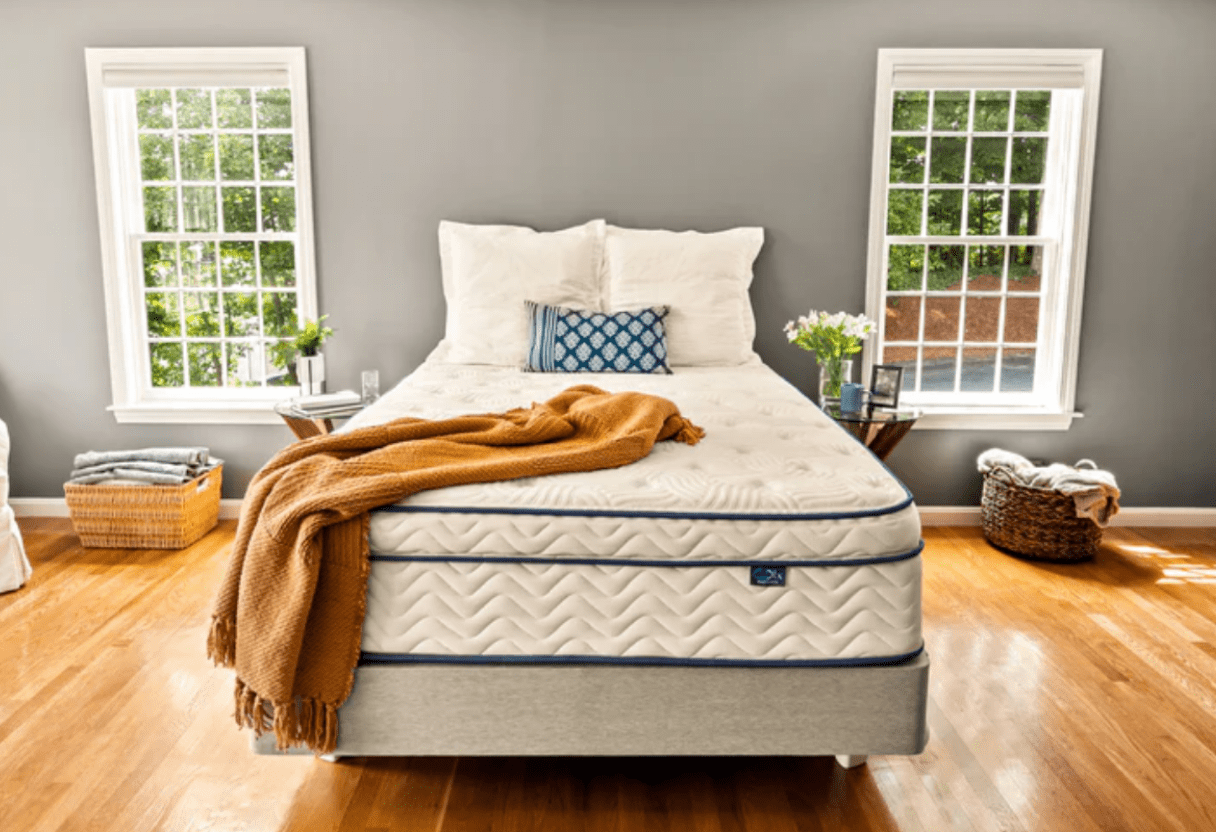
Frequently Asked Questions
Many people have questions about the types of sounds that can enhance sleep. Understanding the effects of different sound frequencies and colors can help individuals find the best option for their relaxation and sleep improvement needs.


